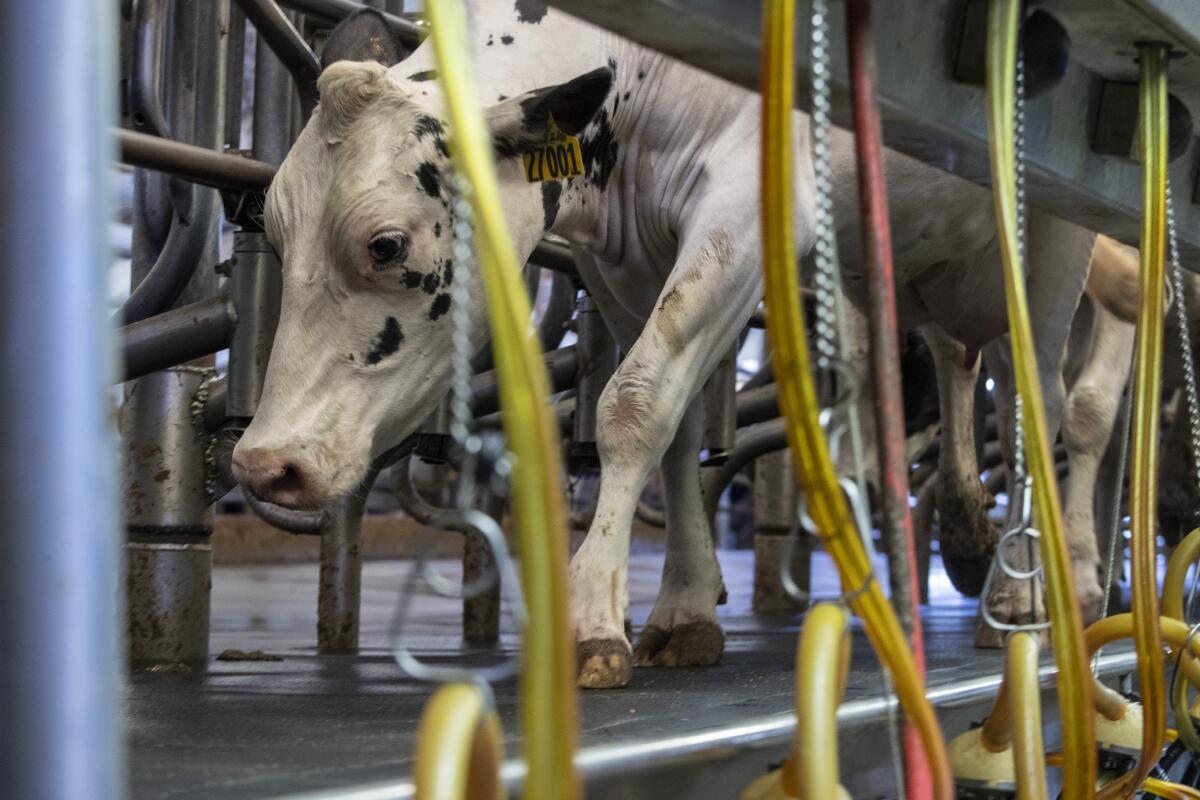In California, dairy farmers are grappling with a severe outbreak of the H5N1 avian flu, which is spreading through cattle herds, leaving a trail of dead cows and calves along roadsides. These carcasses, swarmed by flies and scavenging birds, reflect the harsh impact of the disease that has already devastated poultry populations globally.
California, the largest dairy producer in the U.S., is particularly hard hit, with 124 herds affected, and nearly 200 more across other states like Colorado, Idaho, and Michigan. In an effort to contain the virus, some fallen cattle are deliberately left by the roadside, and concerns are mounting about how this might affect milk production and prices.
Rendering plants are playing a critical role in handling infected carcasses, converting animal remains into products like fertilizers and industrial liquids while minimizing the risk of spreading the virus further. According to Jimmy Andreoli II of Baker Commodities, the increased number of fallen animals is linked to both the long, hot summer and the spread of the virus.
The H5N1 virus is not only causing deaths but also significantly reducing the milk production of infected cows, with some reports showing a drop to 60-70% of normal levels. Although cows may potentially recover milk production after new lactation cycles, it remains uncertain how widespread this recovery will be, leaving the dairy industry on shaky ground.

While the public health risk from cattle carcasses is considered low due to the heat and decomposition neutralizing the virus, there is still potential for human transmission, particularly among those handling infected animals. In California, six confirmed cases of bird flu have occurred in dairy workers, with five more suspected.
Nationwide, 27 human cases have been reported, most involving exposure to infected poultry or cattle. Though human-to-human transmission of the virus remains rare, experts are concerned about the possibility of mutations that could enable it to spread more easily among people.
The effects of the virus on the agricultural sector have been stark. Poultry farms have already experienced significant disruptions, leading to egg shortages and soaring prices. Although egg prices initially stabilized, they are rising again, exacerbated by concerns that people could contract the virus from consuming undercooked or raw eggs. Health experts recommend sticking to thoroughly cooked egg dishes to minimize risk, as certain cooking methods may not kill the virus effectively.
Despite the challenges, state and federal authorities reassure the public that pasteurized milk from affected regions remains safe to drink. Pasteurization kills the virus, ensuring that milk products do not pose a risk to consumers. However, with the dairy industry facing increased instability due to rising infection rates and decreased production, the long-term impact of the H5N1 outbreak on both food supplies and public health remains uncertain.
